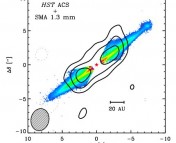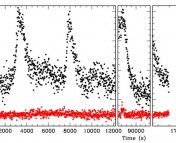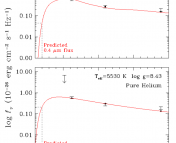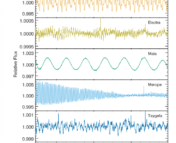Authors: Lecoanet, Daniel; Bowman, Dominic M.; Van Reeth, Timothy
First Author’s Institution: Department of Engineering Sciences and Applied Mathematics, Northwestern University, Evanston IL 60208, USA
Status: Accepted to MNRAS Letters [open access]
Magnetic fields can be found around virtually all celestial bodies. The Earth’s magnetic field is critical for life to exist, but we also know now that stars and black holes have strong fields as well. Surprisingly, very little is known about the origins of magnetic fields generated by many of these cosmic structures. Theories regarding their origins span from stellar birth to binary interaction, but we do know for certain that magnetic fields have a strong impact on stellar structure and evolution.
However– we aren’t able to simply stand on the sun with a compass. Instead, astronomers must infer the presence of a magnetic field beneath a star’s surface. The authors of this paper infer for the first time the magnetic field strength inside a main sequence star. The star, named HD 43317, harbors a magnetic field at its center the authors conclude to be 5 x 10^5 Gauss – one million times the strength of the magnetic field surrounding you now on Earth!
Tell Us About Yourself, HD 43317
HD 43317 currently lives as a B-Type Star on the main-sequence of the Hertzprung-Russell (HR) diagram. Previously, spectroscopy of HD 43317 led to its classification as a B star, a type of star that burns in the range of 10,000 to 30,000 Kelvin and contains about 5 solar masses of material (Figure 1).

Massive stars churn material in the enormous furnace of their cores, fusing and compacting heavier elements with the crushing might of gravity. Yet, astronomers still have difficulty inferring the details of the core environment when they are constrained to only view the surface. For example, if a star was very dense and large, any action happening in the core could be damped on its way out, barely emerging as a ripple or motion on the surface of the star. Remember, stars are REALLY BIG– the difference between the radius of the sun and Betelgeuse is roughly the same as a human against two Burj Khalifas, the world’s tallest building, stacked on top of one another!
Our special guest, HD 43317 stands out amongst its peers for this reason— it has observable signatures of pulsation in addition to evidence of a magnetic field at its surface. In fact, large-scale magnetic fields have only been detected in 10% of massive main sequence dwarf stars.
What Can You Tell Us about Your Asteroseismological Portfolio?
Just like the Earth-based study of seismology, or the study of earthquakes, today’s authors use asteroseismology– seismological signatures on the surfaces of stars. Asteroseismology offers a bridge between the events on the surface of the star to the happenings of the innermost region of the cores. In fact, this study marks the field with innovation: this is the first time asteroseismology has been used to probe the strength of a main sequence star’s internal magnetic field!
Asteroseismology, the study of stellar structure from oscillations, is a valuable tool to ascertain the interior physics of stars across the HR diagram. As waves generated by the churning and excitation in the core want to ripple through the star, all the way up to the surface, there is a restorative force zapping that energy away— gravity. The waves restored by buoyancy (yes, like in the ocean!) are called “internal gravity waves” (not gravitational waves, which are ripples in spacetime itself).
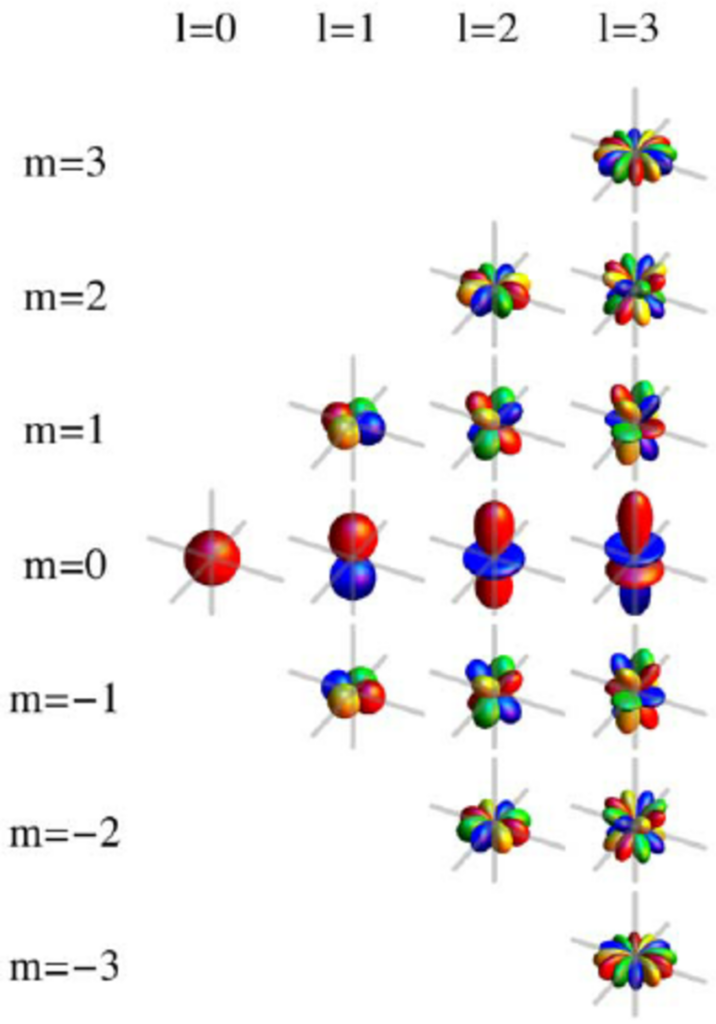
If we were to map the exact ways a star deviates from a perfect sphere, either through stretching or compressing, we would be viewing the results of the waves that survived gravity and altered the surface.
Spherical harmonics are a staple set of functions in modern physics and can be used to describe these deformations as they occur (Figure 2). Each shape in Figure 2 is called a mode, and there is a particular subset of modes nicknamed the “g-modes” that persist and can be directly traced to the effects of gravity (yes, that’s where the “g “comes from!).
In other words, if one can directly view g-modes, then one can use the properties of gravity to infer the core’s strength and mass as it damps g-modes of different frequencies. The strength and geometry of an interior magnetic field can leave an imprint on g-modes such as shifts in the frequency of the modes.
We’d Be Nowhere If It Wasn’t for The G-Modes
Today’s authors expanded upon a previous study done by B. Buysschaert et al. (2018), who presented the data of HD 43317 and extracted its probable g-modes from optical data (reproduced in Figure 3). They noticed that for non-magnetic stars undergoing asteroseismological pulsations, the g-modes would appear at a different set of frequencies than those they observed.

Their immediate suspect was the magnetic field because they knew that the gravitational strength of HD 43317 was not strong enough by itself to damp the lower frequencies. This peculiarity led them to hypothesize that whatever magnetic field exists inside the star, it must be strong enough to suppress low-frequency g-modes, leaving only the higher frequency g-modes to emerge (Figure 4).
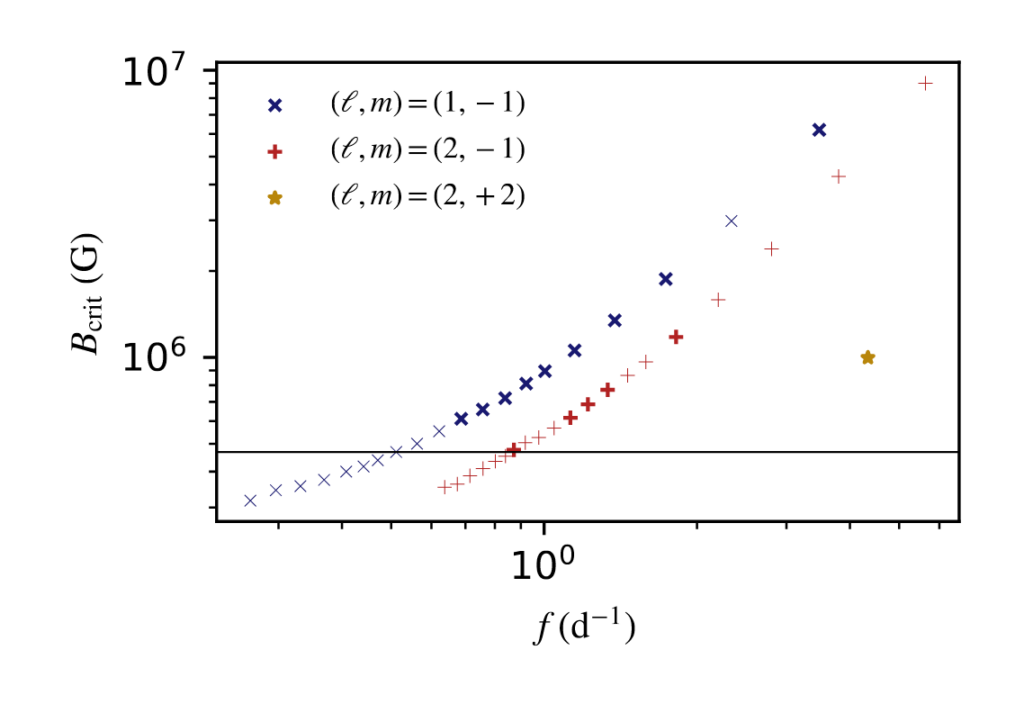
To test this, they take a set of observed g modes (meaning, particular shapes of the spherical harmonics associated with gravity, as shown in Figure 2) and a sample magnetic field strength, and have them interact. The resulting frequency of the wave that survives in their models are plotted along the x-axis per B-field strength. Some of these attempts were not observed in HD 43317, and they are plotted as unbolded points. However, they demarcate the frequencies that do match observation with bolded points. Once they were done sampling many different B-field strengths, they looked at their plot and realized there was a cutoff strength they could draw as a horizontal line on the y-axis, revealing the magnetic field strength that must be within the star and producing the observables at the surface. They determine a field of this strength would suppress g modes below the horizontal line, explaining the lack of low-frequency modes. Therefore, they find the strength of the magnetic field inside the star at the horizontal line in Figure 4!
Astrobite edited by H Perry Hatchfield
Featured image credit: thehollywoodgossip.com and YouTube channel SpaceRip

